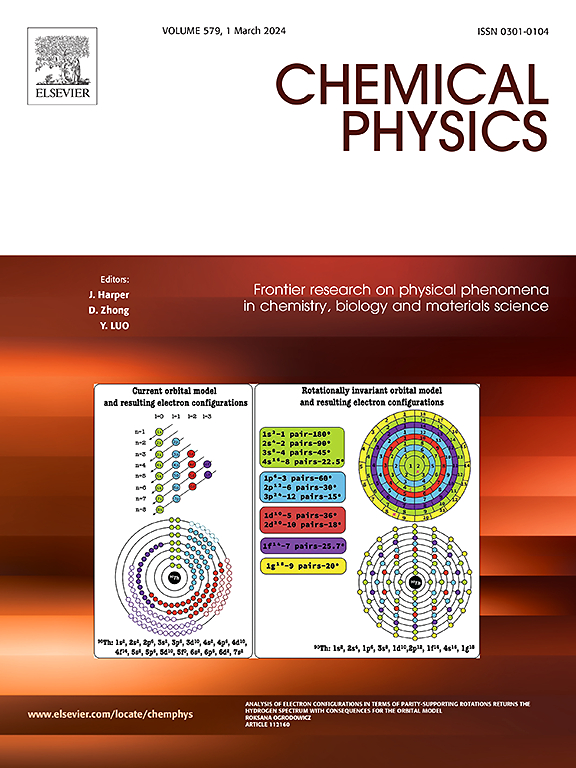Exploring pressure induced innovations in the essential physical properties of niobium based perovskite oxides: A first principles analysis
IF 2.4
3区 化学
Q4 CHEMISTRY, PHYSICAL
引用次数: 0
Abstract
Perovskite oxides particularly ZNbO₃ (Z = Na, K), are promising candidates due to their tunable optoelectronic properties. Analysis of the electronic band structure reveals that both compounds exhibit indirect bandgaps, which expand from 1.284 eV to 1.830 eV for NaNbO3 and from 1.489 eV to 1.814 eV for KNbO3 as pressure rises from 0 to 50 GPa. Optical properties reveal notable absorption in the UV region, improved reflectivity peaks, and robust optical conductivity. Powder XRD patterns manifest peak shifts towards higher angles with rising pressure, showing the lattice compression and improved crystalline quality, notably in KNbO3. According to Pugh's and Poisson's ratio investigations, the materials exhibit anisotropic behavior and predominantly ductile characteristics. Thermodynamic properties of ZNbO3 (Z = Na, K) are also evaluated to check these materials dynamical stability and appropriateness in thermal applications. As a result, the ZNbO3 (Z = Na, K) perovskites exhibit suitability broadly tunable phosphor materials for energy-efficient white LED devices.
探索压力诱导的铌基钙钛矿氧化物基本物理性质的创新:第一性原理分析
钙钛矿氧化物,特别是ZNbO₃(Z = Na, K),由于其可调谐的光电特性,是有希望的候选者。电子能带结构分析表明,两种化合物都表现出间接带隙,当压力从0到50 GPa时,NaNbO3的带隙从1.284 eV扩大到1.830 eV, KNbO3的带隙从1.489 eV扩大到1.814 eV。光学性能显示在紫外区显著的吸收,改善的反射率峰,和强大的光学导电性。粉末XRD谱图显示,随着压力的升高,峰移向更高的角度,表明晶格压缩和晶体质量的改善,特别是在KNbO3中。根据皮尤比和泊松比的研究,材料表现出各向异性行为和主要的延性特征。还对ZNbO3 (Z = Na, K)的热力学性质进行了评价,以检查这些材料的动态稳定性和热应用的适宜性。结果表明,ZNbO3 (Z = Na, K)钙钛矿具有广泛可调的荧光粉材料,适用于高能效白光LED器件。
本文章由计算机程序翻译,如有差异,请以英文原文为准。
求助全文
约1分钟内获得全文
求助全文
来源期刊

Chemical Physics
化学-物理:原子、分子和化学物理
CiteScore
4.60
自引率
4.30%
发文量
278
审稿时长
39 days
期刊介绍:
Chemical Physics publishes experimental and theoretical papers on all aspects of chemical physics. In this journal, experiments are related to theory, and in turn theoretical papers are related to present or future experiments. Subjects covered include: spectroscopy and molecular structure, interacting systems, relaxation phenomena, biological systems, materials, fundamental problems in molecular reactivity, molecular quantum theory and statistical mechanics. Computational chemistry studies of routine character are not appropriate for this journal.
 求助内容:
求助内容: 应助结果提醒方式:
应助结果提醒方式:


